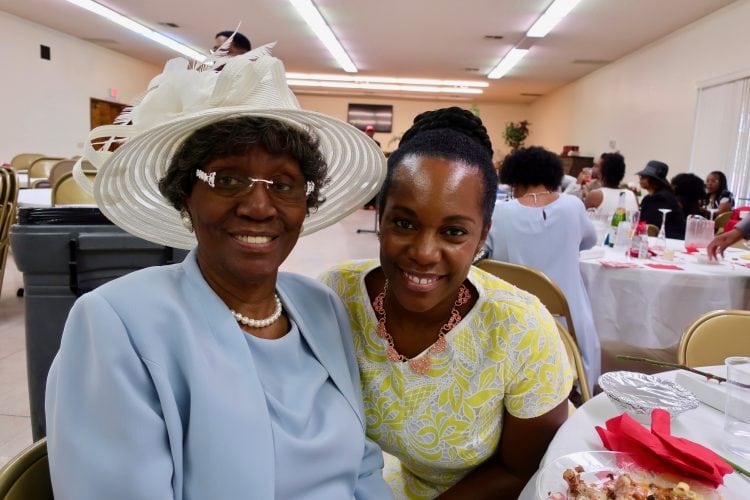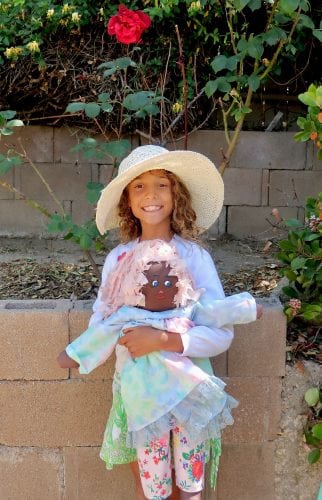
My mother and I have an arrangement of sorts when it comes to Mother’s Day. On alternate years, we trek up to the high desert for a two hour drive so that my mother can parade us in front of her church friends. This time around something significant happened that inspired this essay, and I want to share it with you.
Before I begin, I need to preface that my mother and I have had a difficult relationship over the years. She, born in 1940 into the segregated South, picked cotton and aspired to be one of the two “acceptable” professions for a black woman: a nurse or teacher. I was born after all the battles were (mostly) won, but her persistent view of the colorist black standard of beauty dominated her perception of herself, and of me.
According to my mother, my grandmother was quite open about how she was a disappointment to her. She was too dark, her hair too nappy. Raising my mom single after her husband scrammed left her an unaffectionate, hard disciplinarian. Our relatives and community also reinforced that my mother wasn’t pretty simply because of her dark skin, and openly mocked her. I remember telling me once of a woman who worked as a teacher at her school who did absolutely no teaching at all in the classroom, but maintained job security because of her light skin. So it’s no surprise that, with no outlet to tell her any different, she thoroughly internalized the color hierarchy in the black community. Everything and everyone was filtered through the prism of colorist notions. So-and-so was “pretty” because she was light skinned, and that description was never, ever given to women of our color. She never told me that I was pretty growing up. Not ever. According to what she learned, dark was ugly, no matter how your features were arranged.
And while my worldview was different, and my childhood growing up around various cultures allowed for me to have more flexibility about my identity than she did, the colorist views of the community didn’t escape my experiences. I was a lover of baby dolls and Barbies. But when my mother took me to the toy aisle to buy a new one, I never picked the black ones. After all…they were “ugly.”
As I got older, I saw all the light-skinned girls get all the attention from black boys, and were considered “fine” no matter how they looked. But the time I was 16, I knew that no matter what, I would always be a second or third tier romantic pick. It was so engrained, I never really believed anyone saying I was pretty until well into my 20’s. I thought, that simply because of my darkness, I didn’t have a right to the quality black boys and men before the light skinned girls. Dating life was an endless dinner party where the “nobles” ate first and best and “the help” got the scraps. It was just how things went, and to question it was to by mocked and dismissed. We all knew it was true, but it was poor etiquette to say the obvious.
Surprisingly I found my own way in the romantic world once I got off that roller coaster and opened my options outside of the community. With my husband, black was black was black. No color hierarchy. He liked me and thought I was beautiful–shade never came into play.
Related…
So when we had biracial children–all of whom are lighter skinned–my mother moved in to fawn over them for their skin tone and hair texture and made attempts to reinforce the color hierarchy she and I were accustomed to. I CONSTANTLY had to intervene, and threatened to cut her off if she continued to talk to them about how “special looking” they were. I was NOT having that in my house, and if she couldn’t respect the fact that I didn’t want to pass that diseased thinking onto my kids, she could stay away.
It obviously never came to that, and the results of my policing my mother and regulating their exposure to toxic sections of the black community have seemed to pay off. I’ve written about that quite a few times, but the latest confirmation was with my youngest, who loves to explore “Grannie Mommy’s” house for leftover dolls and toys from when I lived there. My mother has even bought a few for decoration, one of which my little one discovered this past Sunday.
Meet “Pricilla.” The mahogany skinned, pink-haired, blue-eyed dolly that sleeps with her, watches Sponge Bob, and listens attentively when read to or when the little one practices her piano. She literally has not left her presence, and Emma has proudly paraded her all over the neighborhood so her little friends (all white) can ooh and ahh over her.

I have to admit, it is a doll, that at her age, I would not have picked. I’m grateful that in this one’s new world, “dark” is not synonymous with “ugly,” and Pricilla has a new home with a little girl who thinks she’s absolutely fabulous.